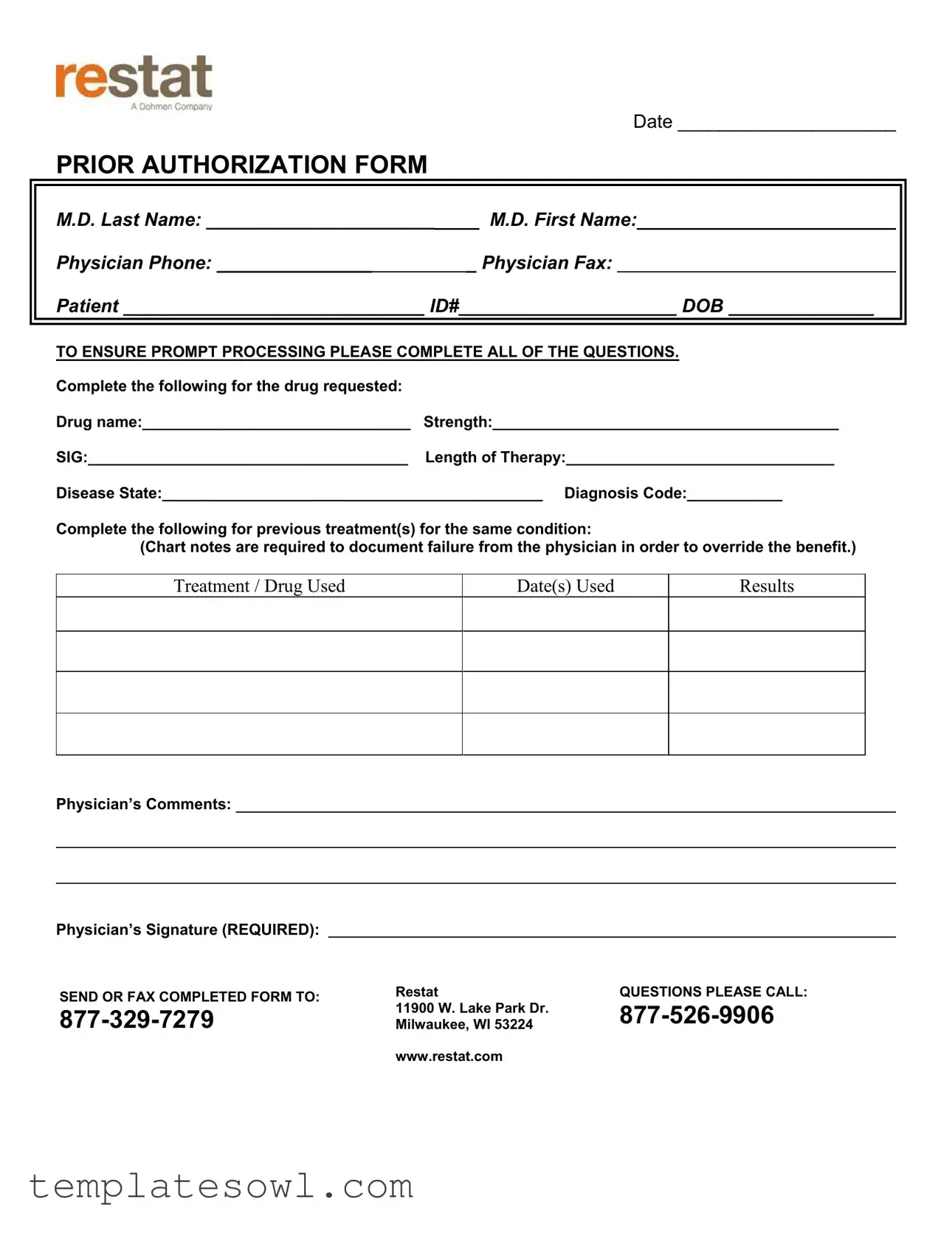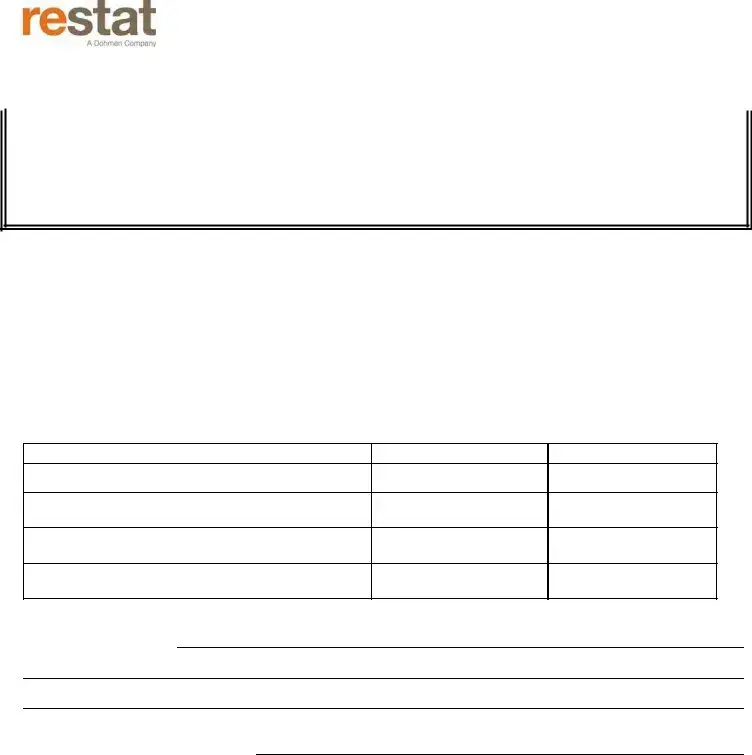What is the Restat Prior Authorization form?
The Restat Prior Authorization form is a document that physicians use to request approval for specific medications before they are prescribed. This process helps ensure that the treatments align with the patient’s needs and health insurance guidelines.
Who needs to fill out the Restat Prior Authorization form?
The form must be completed by the physician who is prescribing the medication. It's designed to capture essential information about the drug, patient details, and previous treatments that justify the need for prior authorization.
What information is required on the form?
Physicians need to provide their names, contact information, and details about the patient, including the patient’s ID number and date of birth. Additionally, specific information about the medication requested, previous treatments, and the physician's signature are required.
Why are previous treatments documented on the form?
Documenting previous treatments is essential to show that the patient has tried other options that were not effective. Insurance providers may require this information to justify the need for a more expensive or alternative medication.
How does the prior authorization process work?
After the physician completes the Restat Prior Authorization form, it is submitted to Restat for review. The request is assessed based on insurance criteria, and once a decision is made, the physician is notified about the approval or denial.
What happens if the prior authorization is denied?
If a request is denied, the physician can appeal the decision. This may involve submitting additional documentation or providing further justification for the necessity of the treatment. Communication between the physician and insurance is critical during this process.
How can I check the status of my prior authorization?
To check the status, you can contact Restat directly at the provided phone numbers. It's helpful to have the patient's information and reference number ready when making the call for faster assistance.
Can I expedite the prior authorization process?
While there are circumstances where urgent requests may be considered, completing the form accurately and thoroughly is vital for prompt processing. It's crucial that all required fields are filled out to avoid delays.
Where do I send the completed form?
Once the form is completed, it should be sent or faxed to Restat at the address provided on the form. Ensure to double-check the contact information to avoid miscommunication.
What should I do if I have questions about the form?
If you have questions regarding the Restat Prior Authorization form or the process itself, you can call the customer service numbers listed on the form for assistance. The representatives are available to guide you through any uncertainties.

